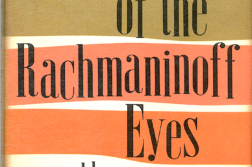Starting out on uncannily similar footing, the two writers are separated by a categorical boundary that keeps them on separate shelves at your local library. Hemingway was a hardboiled novelist and Crane a rhapsodic poet, the former notoriously homophobic, the latter indisputably gay. I would bring them together as the Janus-faced icon of American literary masculinity. The coincidence of their simultaneous birth and their identically named parents is more destiny than chance.
Both writers were associated with “the Lost Generation” and with the broad artistic movement known as Modernism. Both struggled with alcoholism, and both ended their lives in suicide. And yet, just as the positive poles of two magnets repel each other when brought together, Hemingway and Crane barely make an appearance in each other’s biographies. Indeed, once when the two writers were in close physical proximity, what happened next suggests that they couldn’t both survive in the same place at the same time.
As children, Crane and Hemingway experienced parallel, albeit antithetical, crises of misgendering. Crane “cried for days” when prevented from parading through the neighborhood in his mother’s clothes, while for years young Hemingway endured the humiliation of being presented (at his mother’s whim) as his older sister’s twin. Bizarrely specific details are recorded of Crane’s childhood tantrums. In the summer of 1908, when the two families nearly converged in Michigan’s upper peninsula, Crane’s spectacular meltdown entered into the lore of Mackinac Island, not far in time or space from the gruesome events of Hemingway’s story “Indian Camp.” A mix-up involving some people named Hall precipitated another memorable paroxysm. Hemingway’s mother was a Hall; there were Hall cousins all over the region. The two Graces were in fact related in multiple ways, and late in life neighbors in Oak Park, Illinois.
No single causal chain can explain the presence of both Hemingway and Crane in Havana Harbor on the night before Crane’s suicide. Crane was a passenger on the liner Orizaba, refueling overnight between Vera Cruz and New York. Having been thrown out of Paris by gendarmes a few years earlier for misbehavior in bars and dans la rue, he had now been deported from an entire country by Mexican authorities. Intermittently manic, he was in the somewhat careless custody of the hapless Peggy Cowley. Taking the opportunity that night to cruise the Havana docks, Crane was beaten, relieved of his valuables, carried back to the Orizaba by crew members, and locked in his cabin. (Much the same had taken place on the same ship on the trip from New York to Vera Cruz nine months earlier.) The next day at around noon, not far from Key West, he was seen to neatly fold his light jacket, lay it on the deck, and, in his pajamas, throw himself into the Straits of Florida.
On the night of Crane’s visit, Hemingway’s fishing boat the Anita was tied nearby. Hemingway slept there alone that night, as he recorded in his log. Hemingway “overreacted to homosexuals” according to his bullfighting buddy Sidney Franklin, who adds that one time in Spain he “crossed the road to knock one to the ground with a punch.” His Key West drinking buddy George Brooks made a game of goading Hemingway into fag-bashing at Sloppy Joe’s Bar. Portraitist and fishing buddy Henry Strater said that Hemingway “took a fiendish delight in inflicting injury on them when they were completely helpless. … His technique was to get them very drunk and then say, ‘You need some fresh air.’ Then he would take them out in the dark and slug them, and go away, making no provision for anybody even lifting them off the pavement.”
Crane would have been aware of these proclivities in Hemingway, having read about them in The Sun Also Rises. “I know they are supposed to be amusing, and you should be tolerant, but I wanted to swing on one, any one, anything to shatter that superior, simpering omposure.” Crane may even have recognized Hemingway, who was already a widely photographed literary celebrity, if they had passed in the street or encountered each other in a bar.
Hemingway worked with that scenario in To Have and Have Not (1937)—“a stupid and foolish book, a disgrace to a good writer, a book which should never have been printed,” wrote Delmore Schwartz—in which a flirtatious and soused poetaster named Herbert Spellman first bemuses and then repulses a novelist. “I liked your last book very much… I like them all.. That’s marvellous …You know I’m a sucker for anything on the social conflict … I love it. You’re absolutely the best of the lot … etc.” This character, who appears wraith-like and in a delirium of whiskey and absinthe, insistently identifies as “a little stork,” quasi-quotes from Crane’s The Bridge, and is whisked off the scene by friends who call him Harold.
Tellingly, the next chapter of To Have and Have Not is an extended scene in which male relations are reduced to their utmost physical brutality, twenty pages of hellish, bloody slug-out brawling by derelicts in Sloppy Joe’s bar while, in ironic counterpoint, “The Isle of Capri” plays on the jukebox.
So Hemingway and Crane were made for each other, at least for one night. That night finally came in Havana Harbor. The next day Crane was dead. Three years later, it was reported that Crane’s slippered foot had been discovered in the belly of a shark. Twenty years later, in The Old Man and the Sea (1952), Hemingway characterized himself as the tragic hero Santiago, who brings the shark-eaten skeleton of the great marlin back into Havana Harbor.
Mark Shulgasser is a librettist, a photographer, and an astrologer.




